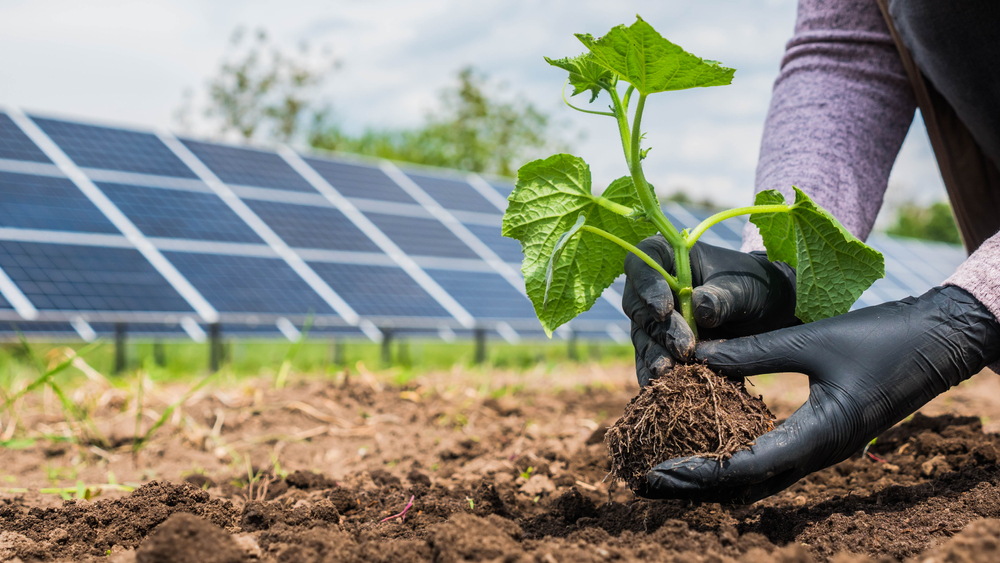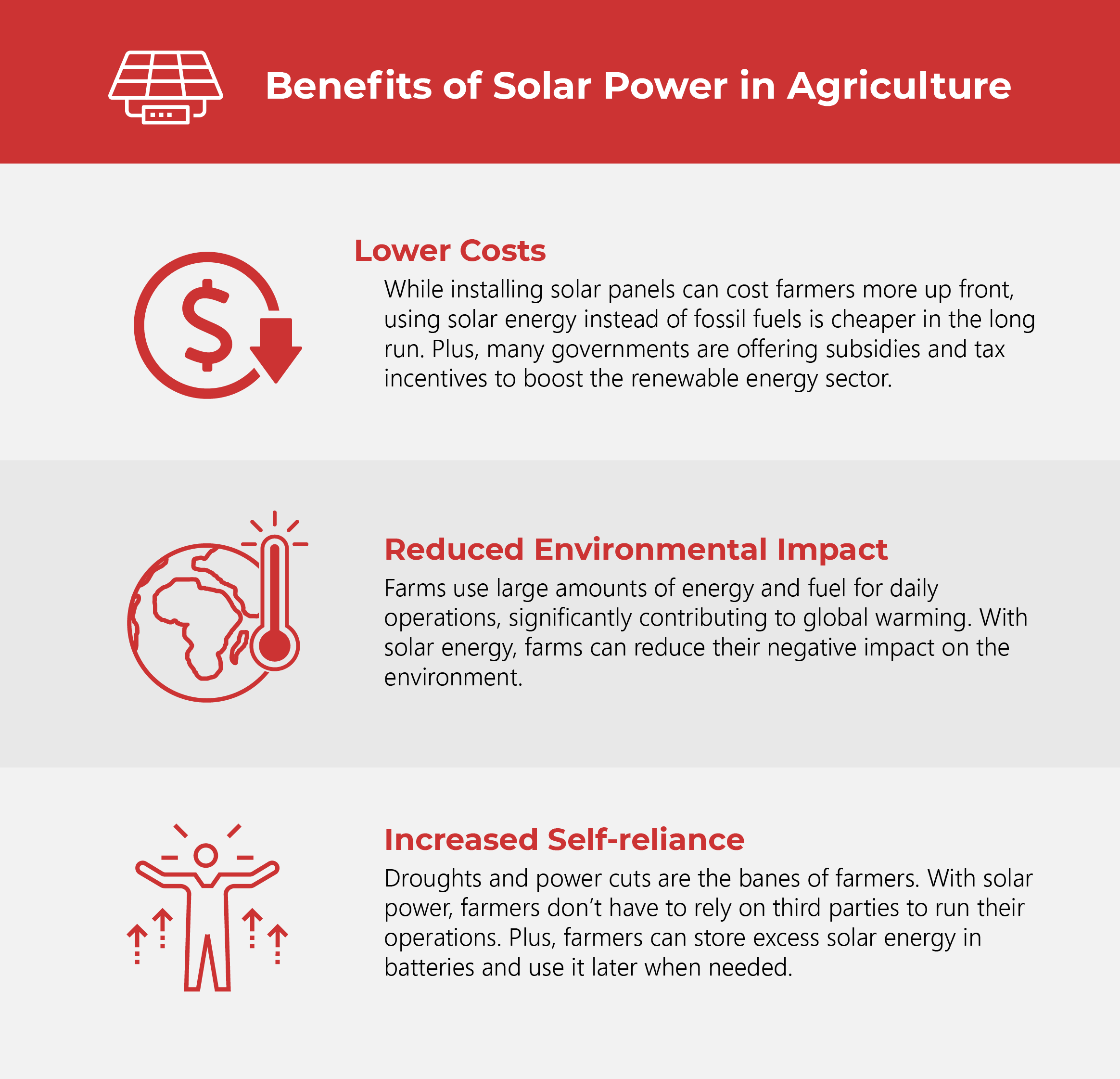Agrivoltaics: Boosting Clean Energy and Food Security

Agrivoltaics incorporates solar arrays into farmlands without compromising crops, presenting a win-win situation in food production and renewable energy.
The sun’s coming up for agrivoltaics, which marries solar power with farming to enable clean energy, increase food security, and provide additional revenue for farmers.
What is agrivoltaics?
In agrivoltaics, photovoltaic (PV) panels are installed at a height that allows plants to grow and animals to graze underneath the panels. Harvesting solar energy along with food can make farms more sustainable and profitable, resulting in higher yields, more renewable electricity, and less water used.
In a world battling climate change and food scarcity, agrivoltaics offers many benefits. Because the solar panels provide shade, the soil retains more water, requiring less irrigation. The panels can also help protect crops from severe weather conditions such as extreme temperatures, high winds, and storms. Studies also indicate that growing certain crops under solar panels can yield a better harvest.

Here comes the sun
From the United States to France to Kenya, farmers are embracing the power of the sun.
A model for agrivoltaics
Located in Boulder County, Colorado, Jack’s Solar Garden is the largest commercially active agrivoltaics research site in the United States. Founded in 2018, it is home to over 3,200 solar panels that create a 1.2 MW community solar garden, which is enough to power over 300 homes.
The family-owned social enterprise serves as a community farm, research laboratory, and educational center. It has partnered with the National Renewable Energy Laboratory, Colorado State University, and the University of Arizona to further research on agrivoltaics. It conducts educational tours for school children, government officials, and farmers. Working with Sprout City Farms, a Denver-based urban agriculture nonprofit, crops harvested at Jack’s Solar Garden are distributed to the community.
“Jack’s Solar Garden provides us the most comprehensive and largest agrivoltaics research site in the nation while also providing other food access and educational benefits to the surrounding community,” said Jordan Macknick, principal investigator for Innovative Site Preparation and Impact Reductions on the Environment (InSPIRE), a project of the U.S. Department of Energy. “It serves as a model that can be replicated for greater energy security and food security in Colorado and the nation.”
Promising results for vineyards
When the weather is good, you can expect a great vintage. But climate change is wreaking havoc on vineyards around the world.
“We'll need solutions if we want to keep our local grape varieties," French winemaker Pierre Escudie told Reuters. “We'll need to do something because we're moving from a Mediterranean climate to a semi-arid climate. Thirty years ago we thought 32 degrees Celsius was an extreme temperature, when today it's 38 or even 40.”
Agrivoltaics could be one such solution. The solar panels in Escudie’s vineyard rotate to give the vines more sunlight on cloudy days. They also protect the grapes during heatwaves and insulate them during cold snaps.
"Four years on, results are very positive because we've reached what we wanted, we've seen a temperature drop of 0.9 degrees Fahrenheit on the Chardonnay variety, half a degree under the panels compared to the test field,” Escudie shared.
Saving water and increasing food security
In the semi-arid county of Kajiado in Kenya, agrivoltaics is enabling clean energy, higher crop yields, and rainwater harvesting.
A year-long research collaboration between the University of Sheffield, World Agroforestry, and the Latia Agripreneurship Institute, it is the first agrivoltaics project in East Africa.
The results of the trials are promising, with crops like kale, eggplants, cabbages, and maize growing better and bigger under the solar panels. Cabbages planted under the solar panels were a third larger than those in the open fields, while the maize were taller and bigger.
The agrivoltaics project also helped reduce water consumption.
“Rainwater is harvested and stored in tanks as the panels have gutters and the solar panels also provide energy thus electricity and water costs are minimized,” Charles Macharia of the Latia Agripreneurship Institute shared.
As one of the Top 21 EMS companies in the world, IMI has over 40 years of experience in providing electronics manufacturing and technology solutions.
We are ready to support your business on a global scale.
Our proven technical expertise, worldwide reach, and vast experience in high-growth and emerging markets make us the ideal global manufacturing solutions partner.
Let's work together to build our future today.






